The surname Murray reflects the historic ties between Ireland and Scotland, and signifies the bearer’s roots in the early kingdom of Moray. Located in the northeast of the country, with coastline on the Moray Firth, the area took its name from the native Scottish Gaelic word moireabh, meaning “seaboard settlement.”
Murray’s strong base in Ireland is partially due to an influx of Scottish immigrants into Ulster during the medieval period. However, Co. Roscommon also lays claim to original Murrays, dating back to the early 700s and the Siol Muireadhaigh (Silmurray) family, whose seat was in Athlone. In Irish, the name is spelled Muireadhaigh, and is translated to mean “lord and master,” with derivatives Gilmore and Kilmore (from Irish Giolla Mhuire) contradictorily signifying “servant of the Virgin Mary.”
The name was first anglicized to O’Murry, ultimately shifting to Murray in the 1600s, but still owns variants in the names Murry, MacMurry, MacIlmurray, Morrow, MacMorrow, and Mac Murchadha, the clan descended from Dermot McMurrough (1110-d.1171), the deposed Irish king of Leinster and Dublin who will be forever blamed for inviting the English into Ireland in his effort to recover his throne. Whether the Murray clan truly originated in Ireland, or not, the name took a firm hold there. Counting among the 20 most common Irish names around the world, it has been worn proudly by a number of prominent figures, dotting both history and pop culture.
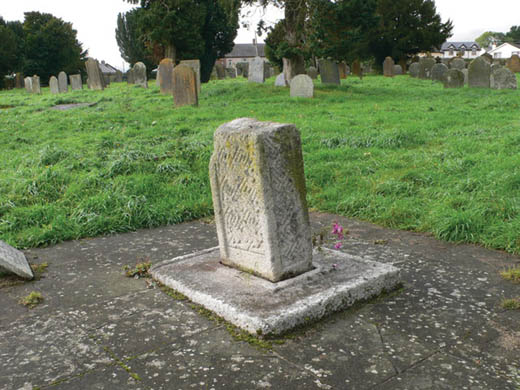
Bishop Donogh O’Murry (b. 1501), of the Roscommon faction, served as the archbishop of Tuam for 26 years, starting in 1548. He was responsible for establishing the early episcopate of Galway (then known as the “Wardenship of Galway,”) permitting the province’s severance from Tuam, and overseeing its Church of Saint Nicholas elevated to the status of collegiate church.
Adam Murray (d. 1700) was a 17th-century Protestant farmer from Derry, who enlisted in the Protestant Army in the 1689 War of the Two Kings. His strategy and courage are credited with keeping the Protestant side in the fight during the early years, and he was appointed commander of his hometown’s cavalry regiment after he and his men kept it from being taken by the Jacobites. Murray even turned down the role of governor to remain in active service.
Sir Terence Aubrey Murray (1810–1873) was a 19th-century Australian farmer, native to County Limerick. He served in Australia’s fledgling parliament as the Speaker of the New South Wales Legislative Assembly from 1860–1862. Known as a diligent and fair leader, Murray was made president of the Legislative Council, the upper house of the governing body, which position he retained until his death.
Murray’s sons carved out their own niches, with the eldest, Sir Hubert Murray (1861–1940), serving as a judge and then Lieutenant Governor in British-owned New Guinea. The younger son, Gilbert Murray (1866–1957), was a professor at Glasgow and then Oxford University, where he was renowned for his translations of Greek drama and poetry, particularly for his dedication to preserving rhyme schemes where predecessors had failed.
Thomas Cornelius Murray (1873–1959) was a Cork playwright whose bleak dramas, mainly centered on the family unit and oppressive social norms in Ireland, made up an integral portion of the Irish Literary Revival. Murray co-founded the Little Theatre in Cork, where he produced an early version of his play Sovereign Love, and his plays were a regular feature of the Abbey Theatre in Dublin, founded by fellow Revivalists including Lady Gregory and William Butler Yeats.
In the world of business, one of the early Murrays to make his mark was Robert Murray (1721-1786), who immigrated from County Armagh to Pennsylvania in 1732, and went on to establish himself as a merchant and shipping magnate in New York City. Today the Murray Hill neighborhood in midtown Manhattan, where Murray had a great house and farm, is a reminder of his success.
Though he was not born to it, ballroom dancer and instructor Arthur Murray (1895–1991) made the appellation a household name throughout the United States, offering dance lessons under his franchise, Arthur Murray Studios. The chain was founded in 1938 and is still in operation today, years after his death in 1991. Born Moses Teichman in Austria-Hungary, he adopted the name he would use for the rest of his life in 1914, due to negative reception of names that sounded even remotely German after the start of World War I.
Ruby Murray (1935–1996) was a singer from Belfast who started performing publicly at the age of 12 in 1947, and continued until her death. Her trademark husky voice, a result of surgery on her glands as an infant, would eventually make her an international sensation: Murray goes down in history the first of a select few performers to have five songs ranked in the British Top Twenty simultaneously, in March of 1955. Her name alone became a British colloquialism as a rhyming synonym for curry, and Murray herself remains an iconic symbol of innocent, soulful ballads of the early 1950s, long after being ushered out by the introduction of rock and roll.
Don Murray (b. 1929) is an American actor who was most active during the 1950s–80s. He was best known for his breakout film role in Bus Stop in 1956, in which he played opposite Marilyn Monroe, and was nominated for an Oscar. Murray also starred alongside James Cagney in 1959’s Shake Hands with the Devil, playing a Irish-American student in 1921 Dublin who gets caught up in the Irish War for Independence.
Frederick Martin MacMurray (1908–1991) was an American actor, best known for his role in the 1944 film noir Double Indemnity directed by Billy Wilder, in which he starred with Barbara Stanwyck. He appeared in more than 100 movies and a successful television series; he played the widowed father on My Three Sons, from 1960 to 1972.
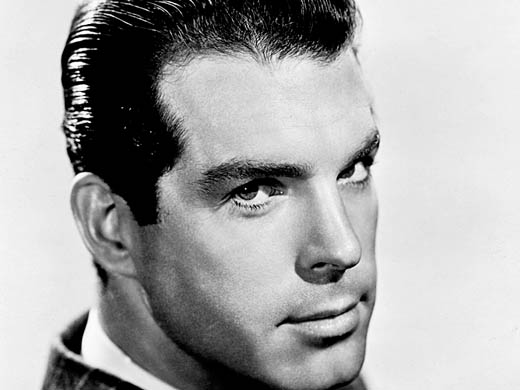
Canadian singer Anne Murray (b. 1945) is a pioneer in the music business in many respects. Touted as “Canada’s Songbird” during her career of thirty-plus years, Murray became the first female Canadian vocalist to have a number one hit in the United States. She was also both the first woman and the first Canadian to be awarded “Album of the Year” by the Country Music Association. With a career spanning multiple genres, including pop and country, Murray brought the surname of her Irish and Scottish grandfather, Daniel, to the forefront of the music industry.
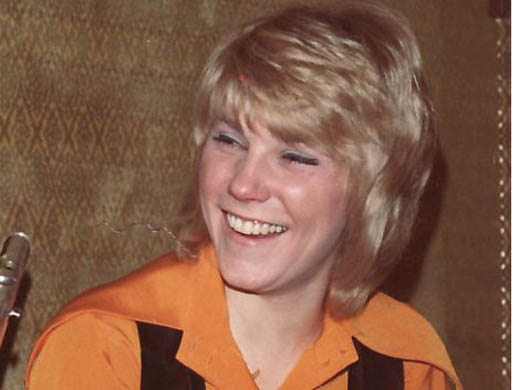
Actor Bill Murray (b. 1950) is best known for his memorable comedic performances in movies such as Caddyshack (1980), Ghostbusters (1984), and Groundhog Day (1993). First gaining note when he joined the cast of Saturday Night Live in 1976 in its second season, his roots are undoubtedly in comedy, but Murray has definitely shown significant prowess in drama as well, earning an Oscar nomination and Golden Globe win for his starring role in 2004’s Lost in Translation. Proud of his Irish heritage, Murray sat down for an interview with Irish America in 1988.
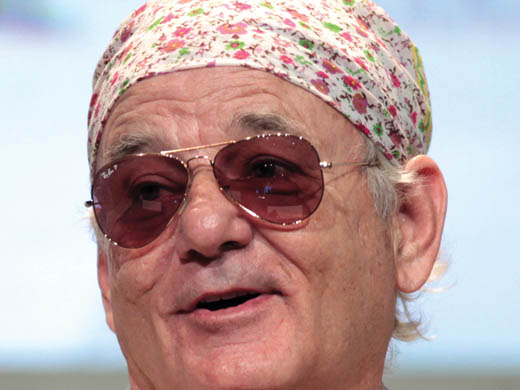
And finally there is Irish America’s cover story on Eileen Murray, who has attained incredible success in the financial world, and today acts as co-CEO of the world’s largest hedge fund, Bridgewater Associates. The Murrays’ long tradition of being movers and shakers has seen several dominate in various industries, including entertainment and finance, and strongly echoes their diverse origins. Wherever they come from, and whatever their field, they make their presence known, and can only be expected to produce more Murrays of note in the future. ♦

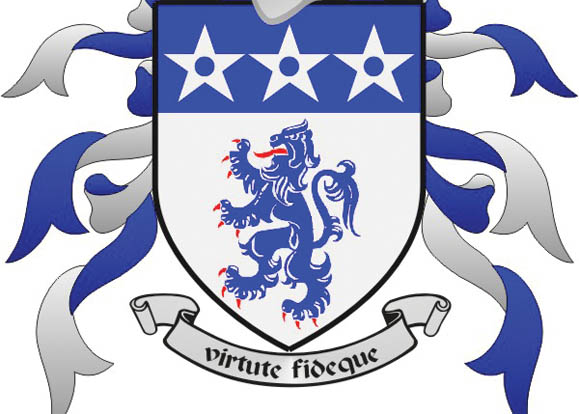
I joined the Curtin when it was former in 1999
okay
The native Irish Murrays date from an earlier time, most likely from the ancient Siol Muiredhaighs who were mainly in northern Roscommon. Their clan seat was at Moate Park in Ballymurray, but this was confiscated by the English in the late 17th century. Other places connected with the Murray surname include Cloonmurray and Kilmurray. Descendants of the Roscommon O’Muireadhaigh sept anglicised their name to Murray in the 17th century. Murry, Morrow and McIlmurray are other anglicised variants.
no
My surname is Murray, I am from the US and of the Scottish Murrays (I think). I am aware of some cousins in Canada in Prince Edwards Island, not too far from Nova Scotia where Anne Murray is from.
I have met Murray’s from all over who were very curious upon learning my name to discover how we might all be related. I knew before that there were Irish Murray’s, and all sorts of MacMurrays and similar names, but never knew how they might be connected. It is so interesting to hear about the anglicisation of different Irish names, and how that resulted in the surnames we hear today.
My surname is also Murray. I have found that we are orianally from Perth Scottland. My Great ancestor owned the ship that we came here on. I would love to hear from. you.
I live on Prince Edward Island. Have you contacted your relatives here? My great grandparents were Irish Murrays.
My surname is Murray as well. My grandfather (and all of his siblings) was from Nova Scotia and moved to Maine as a young boy. I do believe I had some relatives in PEI as well. I would love to know if I have relatives still in Canada.
We are related. My maternal grandfather was Douglas Murray from Maine. We also have Murray relatives from upstate New York near the Great Lakes. I almost drown in one of the Great Lakes at a family reunion and one of my cousins I only knew for a day saved my life. I grew up in southeastern Connecticut. I’m on 23andme, if anyone wants to connect that’s in my bloodline. I live in Virginia Beach now.
you might be realted to me being irish and my last name being murray
My great great great grandparents moved from Ireland to Canada in the late 1800s and they are Murray’s.
My great-great-grandmother and two sons moved to Mackinac Island, MI with five other Irish families from County Mayo in the 1830’s. At last count, there are well over 200 Murrays from every part of the U.S. at the reunions every five years on the island.
Please reply if the reader has any information on Murray’s of West Ireland historically or today. My father and his brother used to visit their Irish cousin who did well as a builder in England but lived in Westport, County Mayo.
Mark, I am also researching Murrays in the Midwest who emigrated from County Mayo. It has been exceedingly difficult finding my relatives in Ireland prior to the early 19th century, as I suspect it has for you as well. These early connections are difficult to establish. But those of use with the same surname have a very powerful tool to help determine if our families are connected: Y DNA. I am hoping to encourage male Murrays (only males carry and pass on a Y chromosome) with ties to the five Connacht counties like yours and mine to have their Y-chromosome analyzed. Once you know your Y haplogroup and clades you can immediately confirm whether you have a male common ancestor with any other male who also knows their Y haplogroup and clade. This is true even if the common connection was many hundreds of years ago. The more Murrays who determine their Y haplogroup the more branches will be discovered on the Y tree, and the more geographical information we will be able to uncover for our common ancestors. I would be happy to discuss this with you if you have the interest. Otherwise, I will tell you that the best and most direct way to do this is with a whole genome scan from Nebula Genomics, who will then send your Y chromosome data to YFull. Unfortunately, the cost is currently around $500, and it takes several months. But you also receive valuable health related genomic information. You will also be able to download a complete archive of your DNA which will be invaluable to future generation of your family.
I’m interested in whether the surnames Murray and Morrow both evolved directly from the placename Moray or one is a variant of the other.
03/20/24:
A few years ago, I came across an online link to a spreadsheet of all males by the name of Murray dating back several hundred years. I’m trying to locate that same spreadsheet for the benefit of my sons, one of whom is marrying a Buckley. My immediate ancestors on my father’s side emigrated to the U.S. during the Irish potato famine. As I’m told, they settled in Glencoe, MN and became farmers.
If possible, I’d like to know more about my ancestors in County Cork Ireland, and which Murray brought the name to Minnesota. I’m hoping the s/sheet helps (if I can find it). Thanks in advance
We share the same ancestors in Glencoe. I have a tree that will get you back four generations. Reach out at this temporary email address: glencoe@sent.com
I don’t have the spreadsheet you’re looking for but there is this archived page that may be useful:
http://web.archive.org/web/20020910060448/http://www.totalnetnh.net/~dmurray/murray_genealogies.htm
Hi- My grandmother was Bridget Murray Gorman -of the Murray/ Moore family, who were from Cork according to her, and farmers near Blarney. They also left during the potato famine but went to Lochgelly & Cowdenbeath, Fife, Scotland. We could be related!
My last name is Murray and my mom has the maiden name Moore.
Perhaps here? https://www.johngrenham.com/findasurname.php?surname=Murray
Dear fellow Murrays. Would you like to know where your Murray ancestors lived 500 years ago? What about 1000 years ago? We all want to know about our ancestry. Where did our surname come from? Where did our ancestors live? We’ve all hit brick walls in that search. But we have a new tool to piece together that history which genealogists could not have imagined until recently. Y-chromosome DNA is the only tool that will put this jigsaw puzzle back together. If you are a Murray – or anyone researching their surname – please consider having your Y-chromosome sequenced. Only men carry this chromosome. But Murray women can ask a brother, grandfather, paternal cousin or uncle to have their Y-chromosome sequenced as well.
The Y-chromosome is very stable. Yours is nearly identical to your Murray great-grandfather’s or a Murray sixth cousin’s Y-chromosome. It changes slightly every second or third generation and only follows the male line. These slow changes mean that we can find direct paternal relatives who shared a common ancestor hundreds or even thousands of years ago. This forms a Murray family tree that can be used to triangulate locations. The more Murrays who have this test done the more we can trace the path our ancestors took from deep history to where you live today. 2024 is early days in building this tree. People who do this today are pioneers in this effort. But the results will be enormously beneficial in the next several years. These results are not possible with standard DNA genealogy.
How to participate.
The best way to is to get your whole genome sequenced. This will provide you with your Y-chromosome as well as all of your genetic information for health, nutrition, and possibly disease screening analysis. This will also allow you to create a genetic archive to pass down to your children and their descendants. Your whole genome DNA will be invaluable to future generations of your family.
You can have this whole genome sequencing (“WGS”) done by:
Nebula Genomics – they will help you transfer your Y data to YFull for T2T analysis. Once you’re included in the Y-tree at YFull please post your surname to the tree.
Dante Genomics – you will then manually transfer to YFull and post your surname.
Sequencing dot com. Same as above.
YSEQ – can be more affordable for Y-chromosome only but more steps and not as user friendly.
FTDNA sells a BIG-Y 700 test and has a large user network. This is a good option for genealogy only but is an inferior test compared to WGS. Please join the “Murray” surname project there if you choose this option. Most importantly, please download and transfer your Y-DNA from FTDNA to YFull to post to their Y-tree where you can also post your surname.
I mentioned YFull many times above. This is the best current site for Y-DNA analysis and posting to a Y-tree at present. They are using the cutting edge T2T Y-chromosome reference genome which was only fully sequenced and published in the last year. This was a major breakthrough in genomics. They are the only site offering this depth of analysis. There are already thousands of testers on their Y-tree, but we need many more Murrays! As I mentioned, today is early days for this revolutionary new tool. Once enough Murrays discover their Y-DNA haplogroup and clade we will finally be able to break through these genealogical brick walls and piece together our lost histories.
I’m a female McMurray and have sons. I am going to see if they would be willing to do these tests.
I can’t get any farther back than about 1780 with my McMurray/McMurry line.
hola tambien Murray de Argentina, mi bisabuelo James Murray nacido en 1852 en Rathaspick, Co. Condado de Westmeath, Irlanda, hijo de John Murray y Betty Nally. el 2025 viajo por primera vez a irlanda estoy tratando de encontrar las raices. Gracias
Translation:
Hello also Murray from Argentina, my great-grandfather James Murray born in 1852 in Rathaspick, Co. County Westmeath, Ireland, son of John Murray and Betty Nally. In 2025 I traveled to Ireland for the first time, I am trying to find my roots. Thank you
My cousin has researched our family tree. And she says there is a hole in information where the family line stops. This she tells me, is due to a lack of information in births and deaths in the country areas of both Ireland and Scotland.
We can trace back to John Murray b1829 – d1894, married Brigid G Lavin b1837.
The thing is, a lot of Murray families who fought for Bonnie Prince Charlie were sent to Ireland and their lands forfeited, castles torn down and ploughed out of sight as happened at Tullibardine, or so I believe. The chapel remains because even the Royalists didn’t dare mess with the church.
I am a Murray female. I have 7 brothers. My grandfather was Griffin Murray. I am doing research on my family tree. It goes was back to John Murray. Back then they had more than one son named the same. Strange but true so it makes it really hard to trace. Good luck with all of your researches.